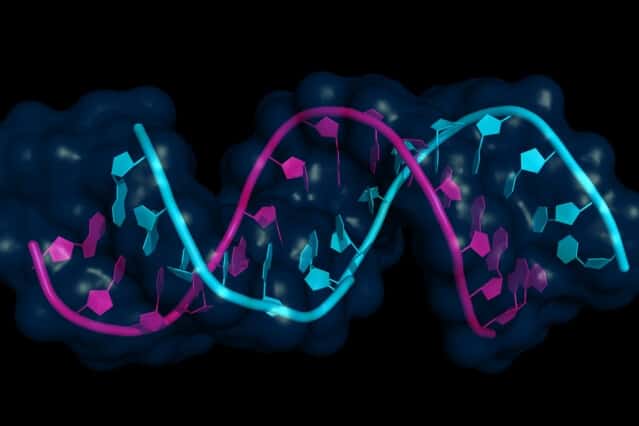Vaccines made from RNA hold great potential as a way to treat cancer or prevent a variety of infectious diseases. Many biotech companies are now working on such vaccines, and a few have gone into clinical trials.
One of the challenges to creating RNA vaccines is making sure that the RNA gets into the right immune cells and produces enough of the encoded protein. Additionally, the vaccine must stimulate a strong enough response that the immune system can wipe out the relevant bacteria, viruses, or cancer cells when they are subsequently encountered.
MIT chemical engineers have now developed a new series of lipid nanoparticles to deliver such vaccines. They showed that the particles trigger efficient production of the protein encoded by the RNA, and they also behave like an “adjuvant,” further boosting the vaccine effectiveness. In a study of mice, they used this RNA vaccine to successfully inhibit the growth of melanoma tumors.
“One of the key discoveries of this paper is that you can build RNA delivery lipids that can also activate the immune system in important ways,” says Daniel Anderson, an associate professor in MIT’s Department of Chemical Engineering and a member of MIT’s Koch Institute for Integrative Cancer Research and Institute for Medical Engineering and Science.
Anderson is the senior author of the study, which appears in the Sept. 30 issue of Nature Biotechnology. The lead authors of the study are former postdocs Lei Miao and Linxian Li and former research associate Yuxuan Huang. Other MIT authors include Derfogail Delcassian, Jasdave Chahal, Jinsong Han, Yunhua Shi, Kaitlyn Sadtler, Wenting Gao, Jiaqi Lin, Joshua C. Doloff, and Robert Langer, the David H. Koch Institute Professor at MIT and a member of the Koch Institute.
Vaccine boost
Most traditional vaccines are made from proteins produced by infectious microbes, or from weakened forms of the microbes themselves. In recent years, scientists have explored the idea of making vaccines using DNA that encodes microbial proteins. However, these vaccines, which have not been approved for use in humans, have so far failed to produce strong enough immune responses.
RNA is an attractive alternative to DNA in vaccines because unlike DNA, which has to reach the cell nucleus to become functional, RNA can be translated into protein as soon as it gets into the cell cytoplasm. It can also be adapted to target many different diseases.
“Another advantage of these vaccines is that we can quickly change the target disease,” he says. “We can make vaccines to different diseases very quickly just by tinkering with the RNA sequence.”
For an RNA vaccine to be effective, it needs to enter a type of immune cell called an antigen-presenting cell. These cells then produce the protein encoded by the vaccine and display it on their surfaces, attracting and activating T cells and other immune cells.
Anderson’s lab has previously developed lipid nanoparticles for delivering RNA and DNA for a variety of applications. These lipid particles form tiny droplets that protect RNA molecules and carry them to their destinations. The researchers’ usual approach is to generate libraries of hundreds or thousands of candidate particles with varying chemical features, then screen them for the ones that work the best.
“In one day, we can synthesize over 1,000 lipid materials with multiple different structures,” Miao says. “Once we had that very large library, we could screen the molecules and see which type of structures help RNA get delivered to the antigen-presenting cells.”
They discovered that nanoparticles with a certain chemical feature — a cyclic structure at one end of the particle — are able to turn on an immune signaling pathway called stimulator of interferon genes (STING). Once this pathway is activated, the cells produce interferon and other cytokines that provoke T cells to leap into action.
“Broad applications”
The researchers tested the particles in two different mouse models of melanoma. First, they used mice with tumors engineered to produce ovalbumin, a protein found in egg whites. The researchers designed an RNA vaccine to target ovalbumin, which is not normally found in tumors, and showed that the vaccine stopped tumor growth and significantly prolonged survival.
Then, the researchers created a vaccine that targets a protein naturally produced by melanoma tumors, known as Trp2. This vaccine also stimulated a strong immune response that slowed tumor growth and improved survival rates in the mice.
Anderson says he plans to pursue further development of RNA cancer vaccines as well as vaccines that target infectious diseases such as HIV, malaria, or Ebola.
“We think there could be broad applications for this,” he says. “A particularly exciting area to think about is diseases where there are currently no vaccines.”
The research was funded by Translate Bio and JDRF.


